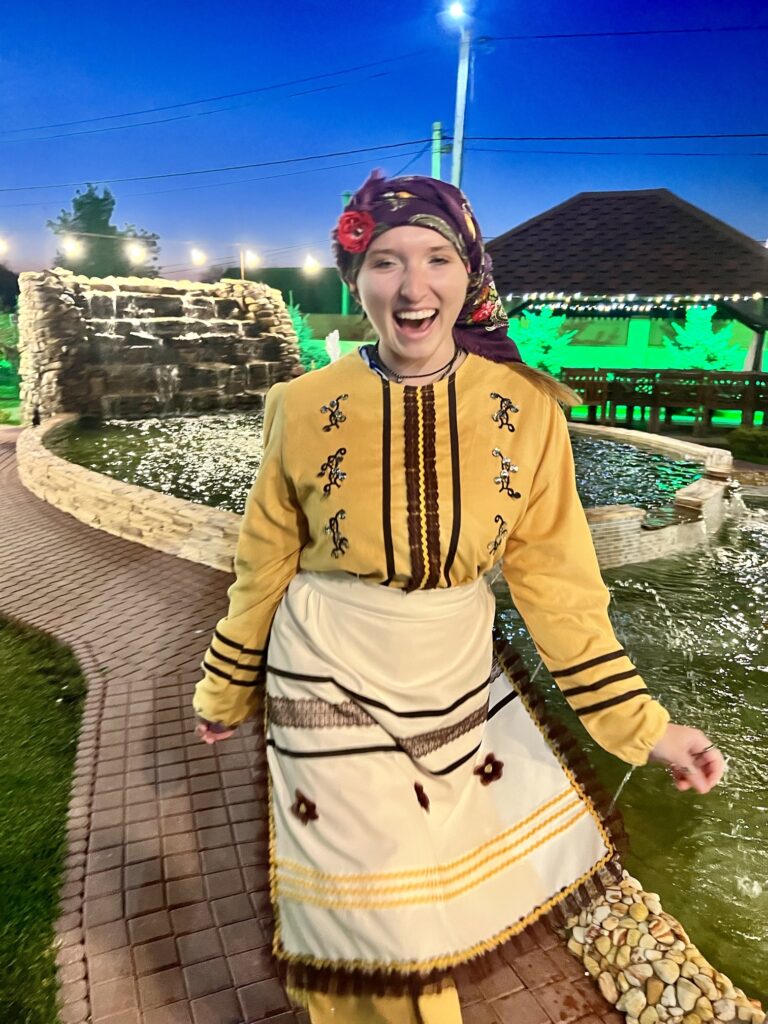
What is Wayang: Uncovering History, Culture, and Mythology
 January 25
January 25
 16 min read
16 min read
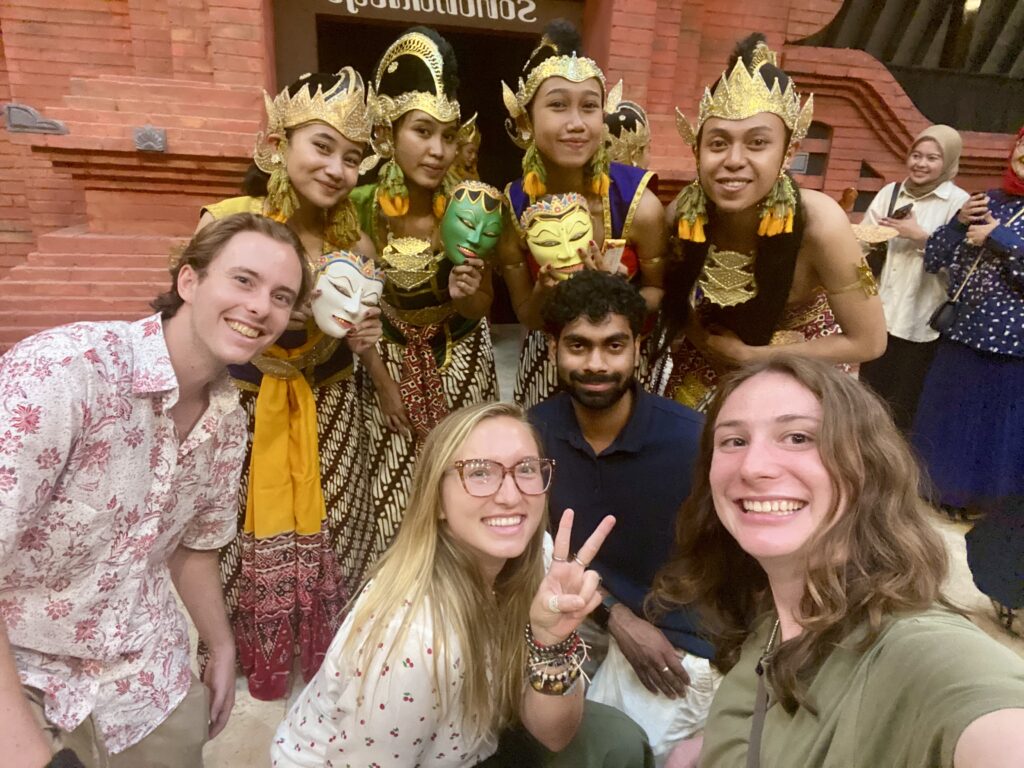
Key Highlights
- What is Wayang? It is an ancient form of storytelling, uses shadow puppetry and intricate wooden puppets to depict epic tales and moral lessons.
- Originating in Indonesia, wayang draws inspiration from Hindu epics like the Mahabharata and Ramayana and local folklore.
- A dalang, or puppet master, maneuvers the puppets, narrates, and conducts the gamelan orchestra, showcasing exceptional artistry.
- Recognized as a UNESCO Intangible Cultural Heritage, the cultural performance plays a vital role in Indonesian communities.
Introduction
Get ready to explore the magical world of wayang, a key part of the puppet arts in Indonesian theatre, particularly in West Java.It is an old art form that combines shadow puppetry, interesting stories, and beautiful music. It offers a rich theatrical experience. With its long history and important cultural roots, these cultural performances still fascinate people. It takes them to a land of myths, legends, and moral challenges. Read on below to learn what is Wayang and why it is an important part of Javanese culture.
The Roots of Wayang
The exact origins of wayang are not clear and scholars are still debating about them. However, it is closely linked to Indonesian culture and religion. Let’s take a journey back in time to explore the interesting beginnings of this art form.
Tracing Back to Ancient Java and Bali
The history of wayang goes back to the old cultures of Indonesia, especially on the Indonesian island of Java and Bali, known for its elaborate puppets and ancient Indonesian culture. Some archeological sites have found what are thought to be the earliest evidence starts from the early centuries of the 1st millennium. Inscribed items, like the 9th-century Jaha inscriptions and the 10th-century Balitung charter, give us interesting hints about shadow puppetry during that time.
But it wasn’t just objects; written works also showed wayang’s growing role. For example, a Javanese poem from the 11th century mentions a “ringgit,” which is a leather shadow figure. This points to the strong presence of wayang in ancient Javanese and Balinese communities.
Influence of Hinduism and Islam
As Hinduism and Buddhism spread to Southeast Asia, they greatly influenced the development of wayang. Stories from Hindu epics, such as the Mahabharata and Ramayana, became important parts of the performance, showcasing elements from Indian mythologies, particularly those from the Indian subcontinent, eastern India, and the eastern coastal region of India, including Andhra Pradesh. These grand tales of gods, heroes, and demons connected well with audiences. When Islam came to Indonesia, wayang changed to include some Islamic traditions. However, it still kept its main Hindu and Buddhist influences.
The Evolution of Wayang Theatre
Wayang theater has changed a lot since its early days. It has always adapted to changes in society and new ideas in art. This journey shows how it can adjust and still stay popular. Over the years, wayang has moved from being part of ceremonies to becoming exciting entertainment. It has kept its important cultural and spiritual roots along the way.
From Ritual to Entertainment
In the early days, performances were closely linked to ceremonies and rituals, reflecting ancient archipelago ceremonial forms. Javanese wayang kulit was thought to have a spiritual meaning. It was often performed during important events or to honor gods. Over time, wayang became more than just a religious event. It turned into a way for all kinds of people to have fun.
This change allowed wayang to reach more audiences. Today, wayang still has cultural and religious importance. It is loved as an exciting form of theater that people of all ages enjoy.
Adaptations Across the Ages
The performances have changed a lot over the course of time. This shows how adaptable it is and how creative the puppeteers, storytellers, and musicians are. New characters have appeared, stories have been rethought, and musical styles have changed. A big reason why it is still popular is that it can adjust to modern issues. The dalang often include comments on social and political topics in their shows. This helps wayang stay relevant and interesting for today’s audiences.
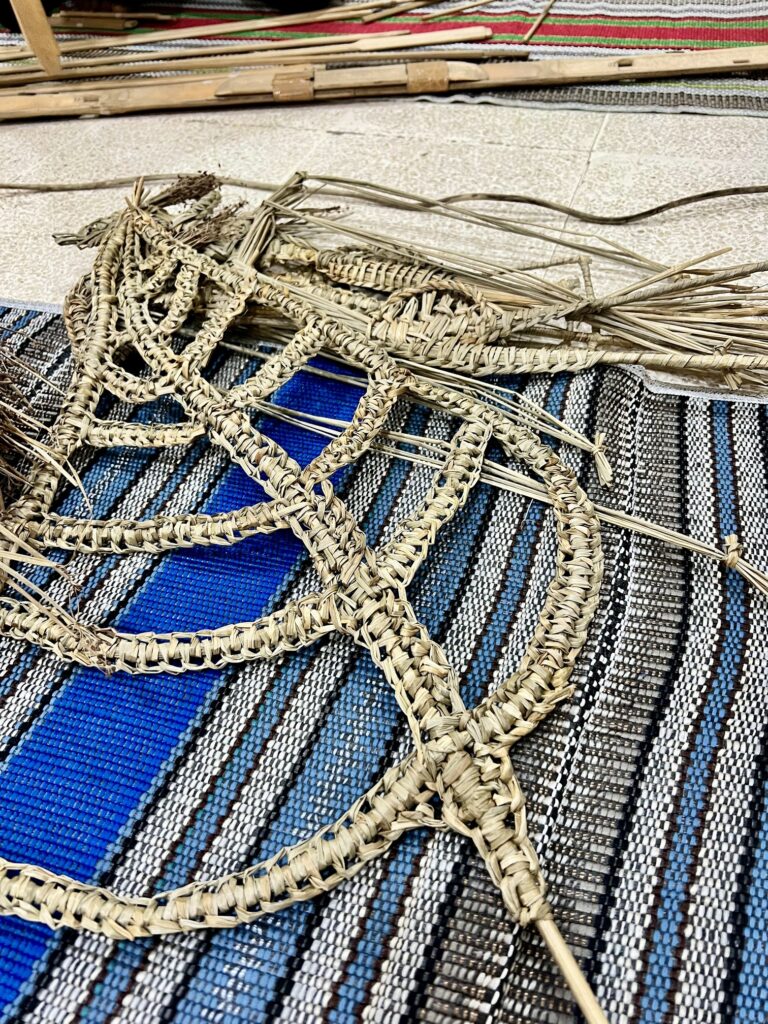
The Art of Wayang Performance
A wayang performance is a complex show made by the skills of many talented people. Each person plays an important part in telling the story. The puppet master, called the dalang, is at the center of this art, showcasing various features of traditional puppet theatre. Their skill, voice, and knowledge of the art form are key to making the performance engaging.
The Role of the Dalang (Puppeteer)
The dalang, or puppeteer, plays a key role in performances. This job is exciting and needs skill. The dalang not only moves the puppets but also tells the story. They control the music and bring the characters alive. With their expert hand movements, they create a magical world. Here, shadow puppets express deep meanings from Hindu epics and local stories. The dalang is the puppet master who holds the performance together. They help take the audience into the wonderful world of wayang puppet theatre.
Crafting the Puppets: Materials and Methods
Crafting puppets takes a lot of care and skill. It requires both creativity and precise technique. The materials differ based on the type of wayang. For example, wayang kulit puppets are usually made from buffalo hide, while wayang golek puppets are carved from wood.
Artisans pay close attention to details, including the faces and costumes of the puppets. The crafting methods have been passed down for years, helping to keep traditional skills alive. These well-made puppets are not just lifeless figures. They become characters full of life and feelings through the dalang’s expert movement.
Music and Gamelan in Wayang
No performance is complete without the beautiful sounds of a gamelan orchestra featuring bronze instruments. This traditional Indonesian group is known for its complex musical styles. They provide the musical background for the story. The gamelan orchestra has many instruments, like metallophones, drums, gongs, and bamboo flutes. Each instrument adds to the overall sound.
The musicians follow the dalang’s lead. They work together in harmony, changing their music to fit the story and the action. This creates a rich and engaging sound experience.
The Linguistic Richness in Wayang Performances
These performances show off Indonesia’s rich language variety and actual life in the performances. The language used changes based on where the show happens and the type of wayang. In Javanese wayang kulit, the dalang skillfully uses different levels of Javanese. They mix old Javanese words with poetic language to make the performance more artistic.
The dalang’s strong grasp of language helps them easily switch between speech styles. This adds more depth and feeling to the stories they tell. Their way of speaking brings characters to life, showing emotions, motives, and detailed plots.
Types of Wayang
Indonesia has many kinds of wayang, from the moving shadows of Wayang Kulit to the three-dimensional figures of Wayang Golek, and other forms. Each type has its own special appeal and changes from one region to another.
Wayang Kulit: Shadow Puppetry
Wayang Kulit is often seen as the most famous type of wayang, particularly Indonesian wayang kulit purwa, popular in Central Java. It charms viewers with its exciting use of light and shadow. The shadow puppets are carefully made, usually from buffalo hide and mounted on bamboo sticks. They come to life on a screen that shines with an oil lamp or, today, a modern electric light.
Here are some key features of Wayang Kulit:
- Two-dimensional puppets: Flat puppets, finely carved from leather.
- Backlighting: The light source is behind the screen, which creates shadows.
- Dalang’s manipulation: The puppets are moved with rods from behind the screen.
- Gamelan accompaniment: The gamelan music adds to the experience and makes it feel rich.
The moving shadows, the dalang’s skilled puppetry, and the beautiful sounds of the gamelan turn Wayang Kulit into a captivating show.
Wayang Golek: Rod Puppets
Wayang Golek is special because of its three-dimensional wooden rod puppets, known as wayang klitik. These puppets are carefully carved from wood. They wear bright costumes and fancy headdresses. Different from flat leather shadow puppets, Wayang Golek puppets are controlled from below. A central rod and strings help move their arms and legs.
The dalang, or puppet master, stands on a raised platform. He brings the puppets to life through their movements. Wayang Golek shows often tell stories about the famous hero, Prince Panji. They are full of lively music and interesting storytelling.
Wayang Wong and Wayang Topeng: Human and Masked Performances
Wayang’s art goes beyond just puppetry. In Wayang Wong, human performers take the spotlight. They become the characters and stories that are usually shown with puppets in a captivating puppet theater. Their detailed costumes, expressive makeup, and smooth movements make the tales unfold in front of the audience.
Wayang Topeng, as the name shows, uses masks. The performers wear beautiful masks that show different characters. They impress the audience with their dance and expressions. This eye-catching style highlights the skill put into making the masks and the dancers’ talent.
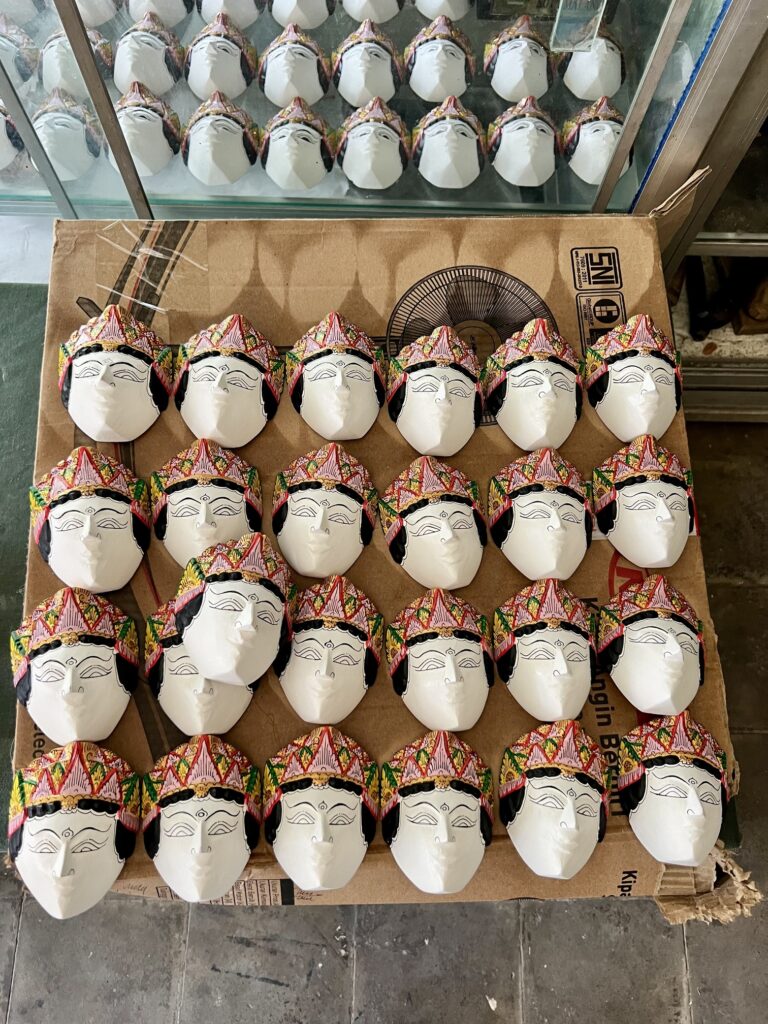
Iconic Stories and Characters
Shows usually focus on famous stories and characters from old epics, myths, and local tales. These stories have a rich cultural meaning. They teach important lessons and give insights into how people behave. Now, let’s explore the famous characters and stories in Wayang.
Wayang Puppet Figures and Their Significance
Wayang puppet figures are more than just puppets. They show different characters with unique personalities, roles, and morals. These puppets range from noble heroes to sly villains. They capture the many sides of human nature. Their big features and clothes help people recognize them easily.
For example, a hero like Arjuna looks handsome and sophisticated. In contrast, the giant king Kumbakarna appears scary and tough. To really understand the stories, it is important to know about these different characters. Their interactions, fights, and victories are key parts of wayang storytelling.
Epics of Mahabharata and Ramayana
The Hindu mythologies Mahabharata and Ramayana give a lot of stories for wayang shows. The Mahabharata tells complex tales about family conflicts, loyalty, betrayal, and fights between good and evil. These stories allow for many dramatic scenes.
The Ramayana looks at love, duty, and fighting against evil. It shows Rama’s journey to save his wife, Sita, from the demon king, Ravana. These epics have been told and retold many times. The dalang often connect the stories to today’s issues. They use these old tales to think about modern social and political matters.
Folk Tales and Local Legends
Wayang is more than just a way to tell grand stories, including wayang golek purwa. It also draws ideas from local communities through folk tales and legends, particularly from the north coast of Java. These stories are passed down through family and reflect the beliefs and history of the areas they come from.
For example, the tales of Cerita Panji Prince Panji in East Java and the stories of Amir Hamzah in Lombok bring local flavor to wayang. These legends often focus on love, adventure, right and wrong, and magic. They provide audiences with fun and familiar stories to enjoy.
Symbolism and Moral Lessons
Wayan performances are rich in symbolism. They show the culture and ideas of Indonesian society. Each character, object, and action has special meanings. This invites the audience to think deeper about what they see. Moral lessons are important in Wayang stories. These stories often deal with the fight between good and evil, the effects of greed and desire, the value of duty and honor, and the success of doing what is right. Through these tales, wayang teaches important lessons about life. It encourages us to reflect and think about ourselves.
Wayang’s Cultural Significance
Wayang is much more than just fun. It is a strong symbol of Indonesian culture. It is important in social gatherings, religious ceremonies, and community events. Its lasting presence shows how significant it is in Indonesian society.
Social and Religious Functions
- Performances are a big part of social and religious activities in Indonesia.
- They help people come together for celebrations and to build friendships.
- These shows are done for important life events like weddings, births, and circumcisions.
- Besides being social, it also has religious meaning.
- They are performed during rituals, ceremonies, and festivals to respect gods, please spirits, or ask for blessings.
- The blend of fun, community, and religion shows how important it is in Indonesian culture.
Wayang as a UNESCO Intangible Cultural Heritage
In 2003, UNESCO added Wayang Puppet Theatre, including the notable flat wooden puppet, to its list of intangible heritage of humanity. This shows how important this art form is to culture and highlights how it adds to the world’s diversity. Indonesia feels proud of this recognition. They see it as an honor and a duty. Many people are working hard to pass down Wayang to future generations. This helps keep its rich tradition alive for many years ahead.
Wayang’s Role in Community Building
Wayang helps build community by creating shared experiences. These performances bring together people from different backgrounds and ages. When people gather to watch, they develop a sense of cultural identity and belonging. Storytelling is a strong way to connect communities. Wayang is popular because it can connect different generations. Grandparents, parents, and children enjoy watching together. This strengthens bonds within families and the wider community. Teluk Asmara becomes a beautiful place for a romantic evening.
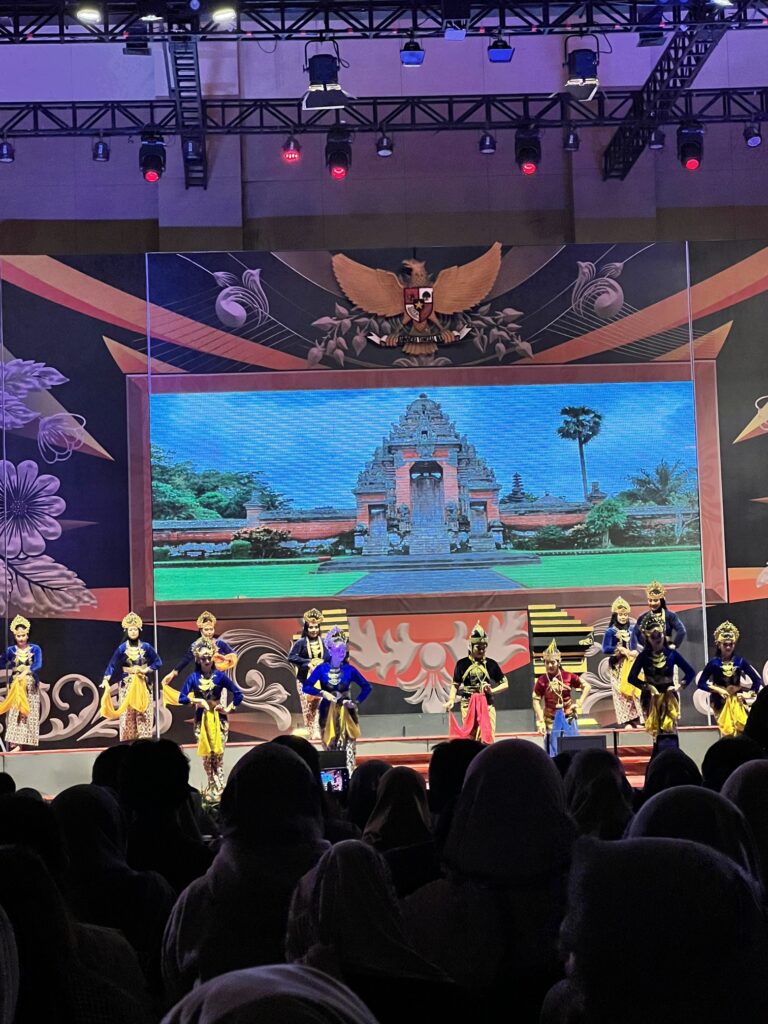
Challenges and Preservation
Like many old art forms around the world, faces problems today. Modern entertainment and changing habits make it hard for Wayang to stay alive. But people are working hard to keep it going. They want to share this beloved tradition with new audiences.
Modernity vs. Tradition
Modern challenges, like the increase of digital entertainment and changes in culture, make people worry about traditional arts, such as wayang. Fewer young people are choosing to work in wayang as a career.
Despite this, many people now see how important it is to keep their culture alive. Efforts are being made to bring wayang back to life. Workshops, educational programs, and working with modern artists are giving a fresh start to this old art form.
Efforts in Keeping Wayang Alive
Many groups and people see the importance of keeping cultural practices alive. Schools and cultural centers are hosting workshops and performances. This helps younger people learn about and appreciate its beauty.
Government agencies also support wayang groups and encourage art sharing. These actions help save traditions while pushing the art in new directions. Modern artists use traditional themes in their projects. They try out new stories, puppet designs, and music styles.
Wayang in Modern Pop Culture
Contemporary wayang is becoming popular again. Filmmakers, musicians, and artists are getting ideas from its amazing stories and visuals. They are adding them to their creations. Wayang characters and stories are appearing in novels, graphic novels, and animated films. This helps younger audiences discover these great tales. Using this media keeps the art form alive and makes sure it stays important in today’s world.
Wayang in the Digital Age
As technology changes the way we enjoy art and culture, wayang is also going on a digital journey. It is finding new ways to connect with people outside the usual performance areas. Its ability to adapt and lasting appeal are clear in its move to the digital world.
Adapting to Technology and New Media
The digital age brings both challenges and chances. New media and technology give us fresh ways to enjoy and connect with this ancient art form, much like Ki Purbo Asmoro’s wayang kulit performances. Now, you can watch live shows online, allowing people from all over the world to see them.
These digital changes are very important. They help more people learn about wayang, keeping its traditions alive in our changing digital world.
Global Outreach and Education
Wayang is not just found in Indonesia anymore. It is now seen on stages and screens all over the world, thanks to global outreach and cultural exchange programs. Many international festivals showcase performances. These shows attract people who may not know much about this art form.
Educational programs at universities and cultural institutions are important to promote awareness of this Indonesian tradition. These efforts help connect different cultures. They encourage appreciation for the storytelling and artistic skills that are part of this amazing art form.
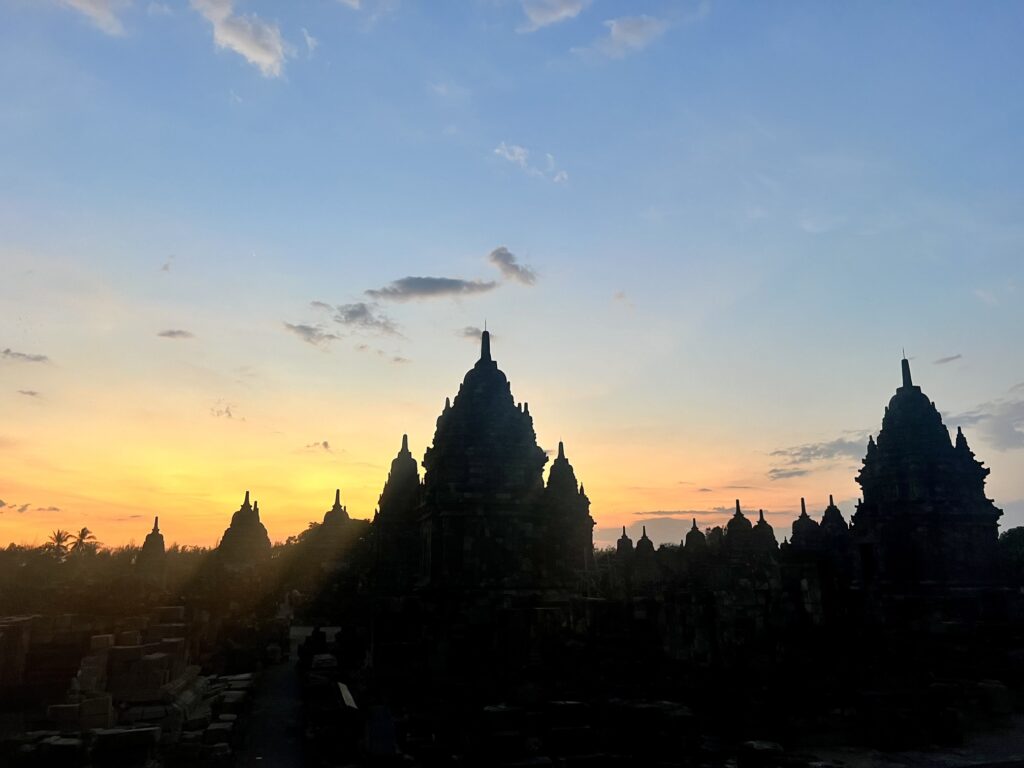
Conclusion
So what is Wayang? It is a valued part of culture that blends history, art, and storytelling. It started long ago in Java and has grown into many new forms. The skillful performances by Dalangs and the various styles of puppetry show how deep this traditional art form is. As we look into its famous stories and characters, we find important moral lessons and cultural meanings. Even with some challenges, people are working hard to keep Wayang alive. They mix old traditions with new ideas. Its online presence and wide reach help this UNESCO Intangible Cultural Heritage connect with audiences everywhere. It brings together the past and the present in a special way. Dive into the amazing world of Wayang and start a cultural journey that is unique.
Planning a visit to Indonesia? Check out my complete travel guide!
Frequently Asked Questions
What is the Oldest Form of Wayang?
Wayang Kulit, which is known as shadow puppetry, is believed to be the oldest form of this art, often characterized by its intricate shadow play. Its history goes back to ancient storytelling traditions. There is proof that it existed in Java and Bali during the first thousand years.
How Does One Become a Dalang?
Becoming a dalang is hard work. It usually takes many years of tough training to become a skilled puppeteer. People who want to be dalangs learn from expert puppeteers. They get knowledge that has been shared for many years.
Can Wayang be Seen Outside of Indonesia?
Wayang is loved by many around the world. It is not limited to just one place. Performance groups often travel to perform in different countries. They take part in cultural festivals, which makes audiences everywhere enjoy their art.
Are There Different Stories for Different Types of Wayang?
Yes, Hindu epics and the Ramayana are important in the stories. However, there are different types. Each can tell stories differently depending on the region. For example, Wayang Golek usually tells stories about Prince Panji.
How are Wayang Performances Integrated into Ceremonies and Festivals?
Wayang performances are an important part of ceremonies and festival celebrations. They make these events more enjoyable. They pay respect to deities, celebrate important life events, and help bring the community closer together.
What is the Term Wayang?
The word ‘wayang’ comes from the Javanese language. It means ‘shadow’ or ‘imagination.’ This shows that the art form is very important in Indonesian culture.
Related Posts
Explore Yosemite National Park: A Nature Lover’s Paradise
Key Highlights Next, let’s dive into what makes Yosemite National Park an unmatched treasure of the United…
Local Favorites: What Food to Eat in California
Key Highlights Introduction California, also called the golden state, is a great place for people who love…
Discover the 20 Best Places to Visit in California Now
Key Highlights Introduction California is a place that has something for everyone. You can find natural beauty…

